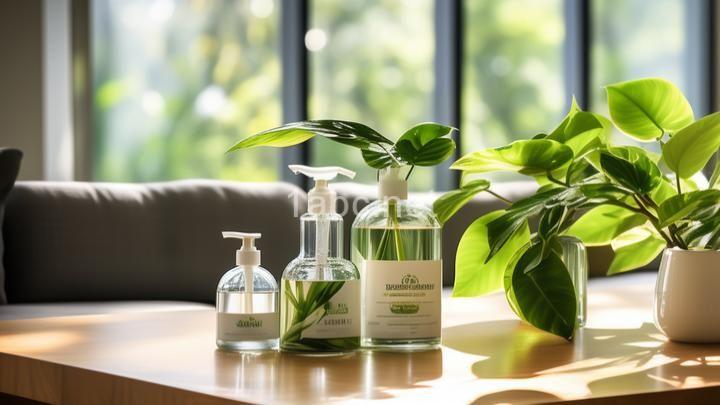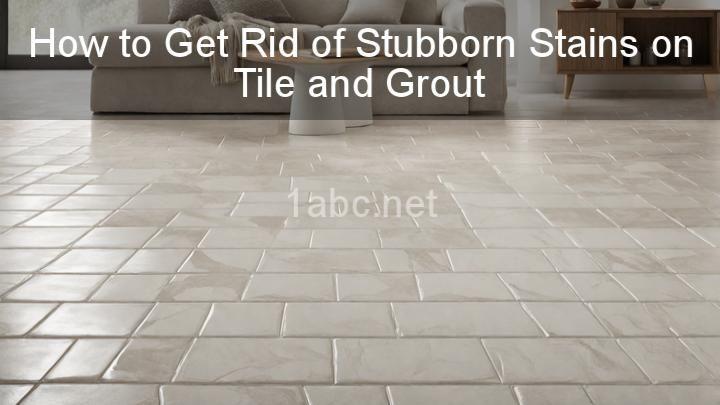Revive Your Carpets: Transforming Old into New with These Simple Tips
I. Assess the Condition:
II. Deep Cleaning Techniques:
1. Vacuuming:
2. Spot Treatments:
3. Steam Cleaning:
III. Freshening Up:
1. Deodorizing Techniques:
2. DIY Carpet Refreshers:
IV. Repairing and Restoring:
1. Addressing Carpet Tears or Holes:
2. Fixing Loose Carpet Fibers:
V. Preventive Maintenance Tips:
Conclusion:

Introduction:
Welcome readers and carpet enthusiasts! We all know that carpets play a crucial role in making our homes cozy and inviting. However, over time, carpets can lose their luster and show signs of wear and tear. But fret not! In this blog post, we will provide you with simple yet effective tips to transform your old carpets and revive them to their former glory.
I. Assess the Condition:
Before diving into the process of reviving your carpets, it's essential to assess their current condition. By identifying specific issues like stains, wear, or odors, you can tailor your approach accordingly. We recommend taking pictures of the problem areas for reference before starting the revival process. This will help you track your progress and compare the before and after results.
II. Deep Cleaning Techniques:
1. Vacuuming:
Regular vacuuming is the first step to maintaining and reviving your carpets. It helps to remove dust, dirt, and debris that accumulate over time. When vacuuming, make sure to use a high-quality vacuum cleaner with strong suction power. Start by removing any loose items from the carpet's surface, such as toys or paper clips. Then, slowly move the vacuum in different directions, overlapping each pass to ensure thorough cleaning. Pay extra attention to high-traffic areas and areas near entrances where dirt tends to accumulate.
2. Spot Treatments:
Carpets often fall victim to accidental spills and stains. To effectively address specific stains, it's crucial to understand their nature and use appropriate cleaning methods. For food stains, gently scrape off any residue and then blot the stain with a mixture of mild detergent and warm water. Pet accidents can be treated with a mixture of white vinegar and water. Ink stains, on the other hand, can be challenging to remove, but rubbing alcohol or a specialized ink remover can do the trick. Always remember to blot the stain instead of rubbing it, as rubbing can spread the stain further.
When it comes to stain removers, eco-friendly options are highly recommended. You can find these products in stores or even make your own natural stain removers using ingredients like baking soda, lemon juice, or hydrogen peroxide. Before applying any stain remover, test it in an inconspicuous area to ensure it doesn't cause discoloration or damage to your carpet.
3. Steam Cleaning:
Steam cleaning is an excellent technique for deep cleaning and rejuvenating your carpets. It uses hot water and steam to extract dirt and grime from deep within the carpet fibers. Renting a steam cleaner or hiring a professional service are both viable options for steam cleaning your carpets.
If you choose to rent a steam cleaner, make sure to carefully read and follow the instructions provided. Start by thoroughly vacuuming the carpet to remove loose dirt and debris. Then, fill the steam cleaner with hot water and the recommended cleaning solution. Slowly pass the steam cleaner over the carpet, making sure to apply even pressure and overlapping each stroke for optimal results. Once the cleaning process is complete, allow the carpet to dry completely before placing any furniture back on it.
It's important to note that steam cleaning should be done periodically, as excessive moisture can damage certain types of carpets. Additionally, always take proper safety precautions, such as wearing gloves and using the steam cleaner in a well-ventilated area.
III. Freshening Up:
1. Deodorizing Techniques:
Over time, carpets can develop unpleasant odors due to spills, pet accidents, or general wear. To eliminate these odors and freshen up your carpets, there are several natural methods you can try. One popular option is using baking soda. Sprinkle a generous amount of baking soda over the carpet, ensuring even coverage. Let it sit for a few hours or overnight, allowing the baking soda to absorb the odors. Finally, vacuum up the baking soda, and you'll be left with a fresh-smelling carpet.
2. DIY Carpet Refreshers:
If you prefer a more fragrant approach to freshening up your carpets, you can make your own carpet refreshers using natural ingredients. One simple recipe involves mixing baking soda with a few drops of your favorite essential oil. The baking soda absorbs odors, while the essential oil leaves a pleasant scent behind. Sprinkle the mixture over your carpet, let it sit for some time, and then vacuum thoroughly. This DIY carpet refresher is not only effective but also cost-efficient and environmentally friendly.
IV. Repairing and Restoring:
1. Addressing Carpet Tears or Holes:
Small tears or holes in carpets can be unsightly and can undermine the overall appearance of a room. Fortunately, you can repair them yourself with a few simple steps. Start by trimming any loose or frayed threads around the damaged area. Then, apply a carpet adhesive to the edges of the tear or hole and press them back together. Place a heavy object on top of the repaired area and let it dry for the recommended time. For more extensive repairs, it's advisable to seek professional services.
2. Fixing Loose Carpet Fibers:
Loose or frayed carpet fibers can make your carpet look untidy and worn out. To fix this issue, you can use adhesive or a carpet repair kit. First, gently pull the loose fibers back into place. Apply a small amount of adhesive to the base of the fibers and press them firmly onto the carpet backing. Alternatively, you can use a carpet repair kit that contains specialized tools for trimming and reattaching loose fibers. Take your time during this process to ensure a seamless repair.
V. Preventive Maintenance Tips:
To extend the lifespan of your carpets and maintain their appearance for longer periods, here are some preventive maintenance tips to consider:
- Regular vacuuming: Make it a habit to vacuum your carpets at least once a week, or more frequently in high-traffic areas.
- Spot cleaning: Address spills and stains immediately to prevent them from setting in and becoming more challenging to remove.
- Reduce foot traffic: Minimize the wear and tear on specific areas of your carpet by strategically placing area rugs or runners.
- Use doormats: Placing doormats at entrances can help trap dirt and debris, preventing them from being tracked onto your carpets.
Conclusion:
Reviving your carpets is a simple yet rewarding process that can significantly enhance the appearance of your home. By assessing the condition, deep cleaning, freshening up, repairing, and adopting preventive maintenance practices, you can transform your old carpets into looking and feeling like new. Remember, building healthy habits around carpet maintenance will not only enhance your home's appearance but also contribute to a clean and cozy living space. So, go ahead and take action! Wishing you success in your carpet transformation journey.
Happy carpet reviving!
FREQUENTLY ASKED QUESTIONS
How often should I clean my carpets?
The frequency of carpet cleaning depends on a few factors, such as the amount of foot traffic, presence of pets or children, and any specific stains or spills. However, as a general guideline, it is recommended to deep clean your carpets at least once or twice a year. Regular vacuuming should be done weekly to remove dirt and dust. Additionally, you may need more frequent cleaning if you have allergies or respiratory issues.
Can I use regular household cleaners on my carpets?
Using regular household cleaners on carpets is not recommended. Most household cleaners are formulated for hard surfaces and may contain harsh chemicals that can damage or discolor your carpets. It's best to use carpet-specific cleaners or consult a professional carpet cleaning service for the most effective and safe cleaning options for your carpets.
What is the best method to remove stains from carpets?
When it comes to removing stains from carpets, there are several effective methods you can try. Here are a few common approaches:
- Blotting: Start by gently blotting the stain with a clean cloth or paper towel to absorb as much of the liquid or substance as possible. Avoid rubbing, as it can spread the stain and damage the carpet fibers.
- Using a cleaning solution: Mix a solution of mild detergent or carpet cleaning solution with warm water. Apply a small amount of the solution to the stain and gently blot it using a clean cloth. Rinse the area with water and blot dry.
- Vinegar and water: For stubborn stains, you can mix equal parts of white vinegar and water. Apply the solution to the stain and let it sit for a few minutes. Blot it with a clean cloth and repeat if necessary. Remember to rinse the area with water and blot dry afterward.
- Baking soda paste: Make a paste by mixing baking soda with water until it forms a thick consistency. Apply the paste to the stain, let it dry completely, and then vacuum it up. This method can be helpful for removing odors along with stains.
- Commercial carpet stain remover: There are various carpet stain removers available in the market. Make sure to carefully follow the instructions on the product and test it on a small, inconspicuous area of the carpet before applying it to the stain.
Remember, the effectiveness of each method can depend on the type of stain and the carpet material. It's always a good idea to test any cleaning solution in an inconspicuous area first and to consult professional carpet cleaners for tough stains or delicate carpets.
How long does it take for carpets to dry after cleaning?
The drying time for carpets after cleaning can vary depending on several factors such as the cleaning method used, carpet thickness, humidity levels, and airflow in the room. Generally, it can take anywhere from 2 to 24 hours for carpets to completely dry. To speed up the drying process, it's recommended to open windows, use fans, or turn on the air conditioning to improve air circulation. Additionally, avoid walking on the carpet until it is fully dry to prevent any potential damage or re-soiling.



